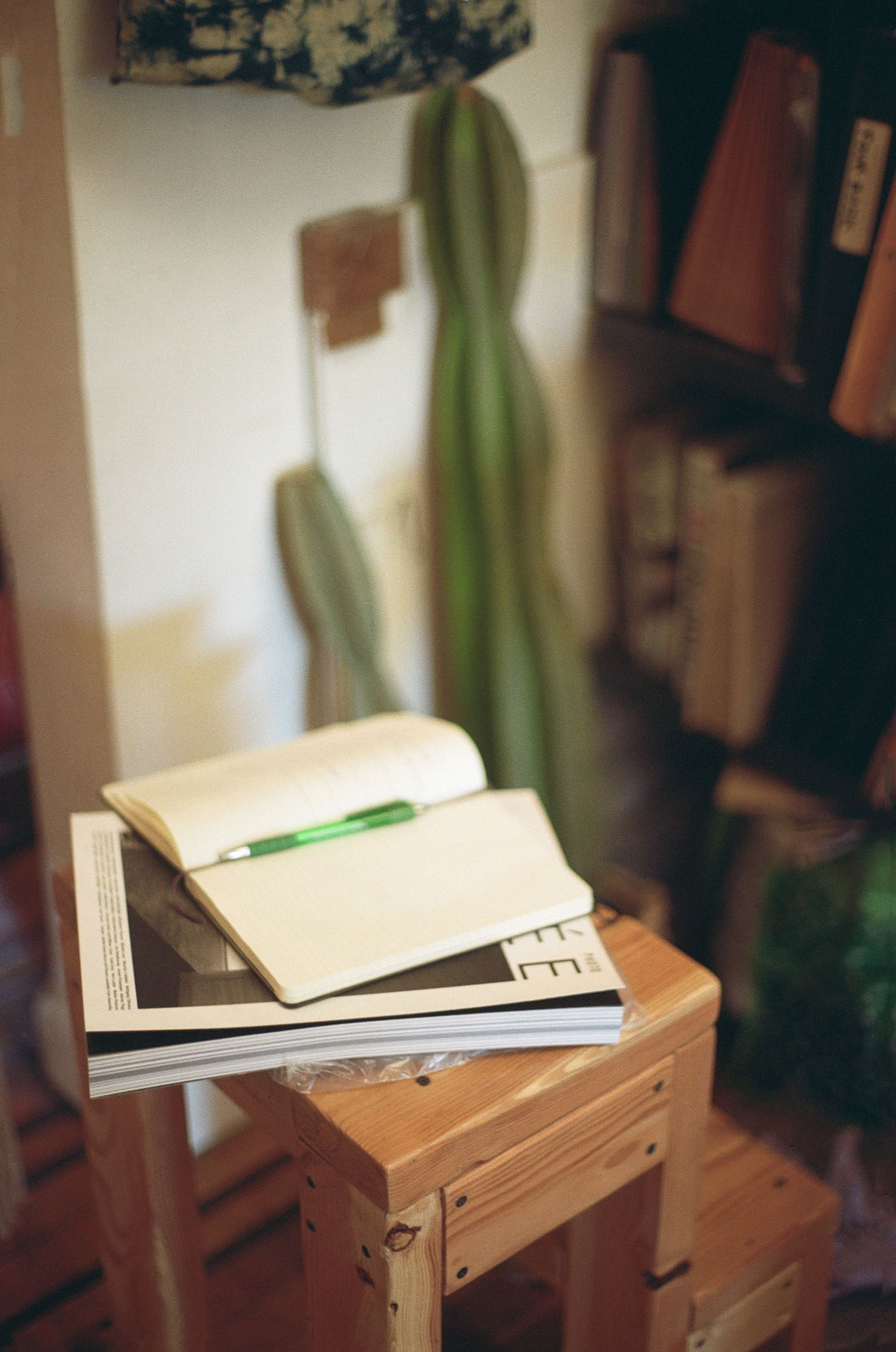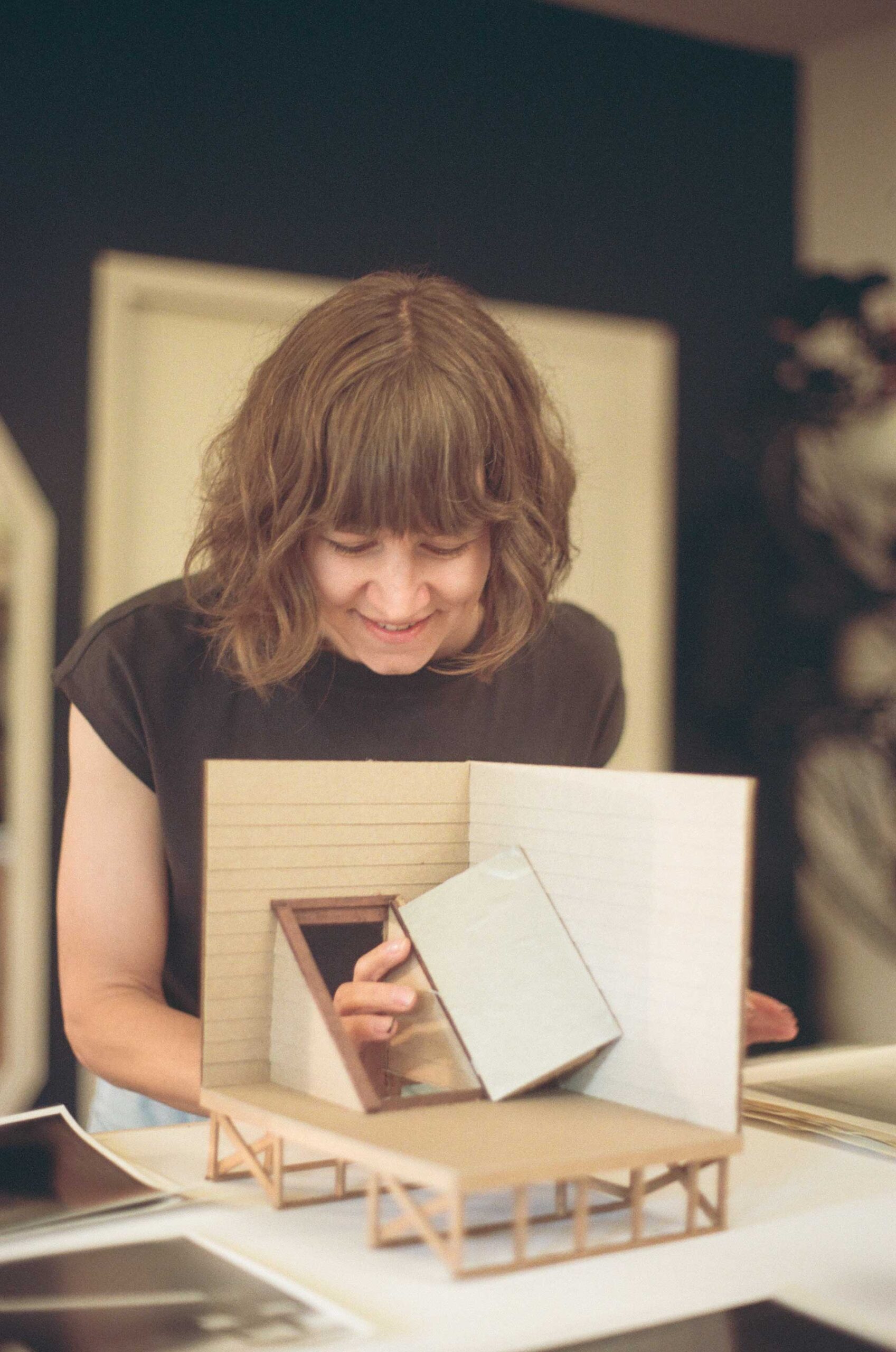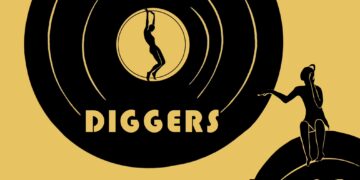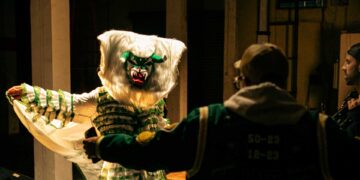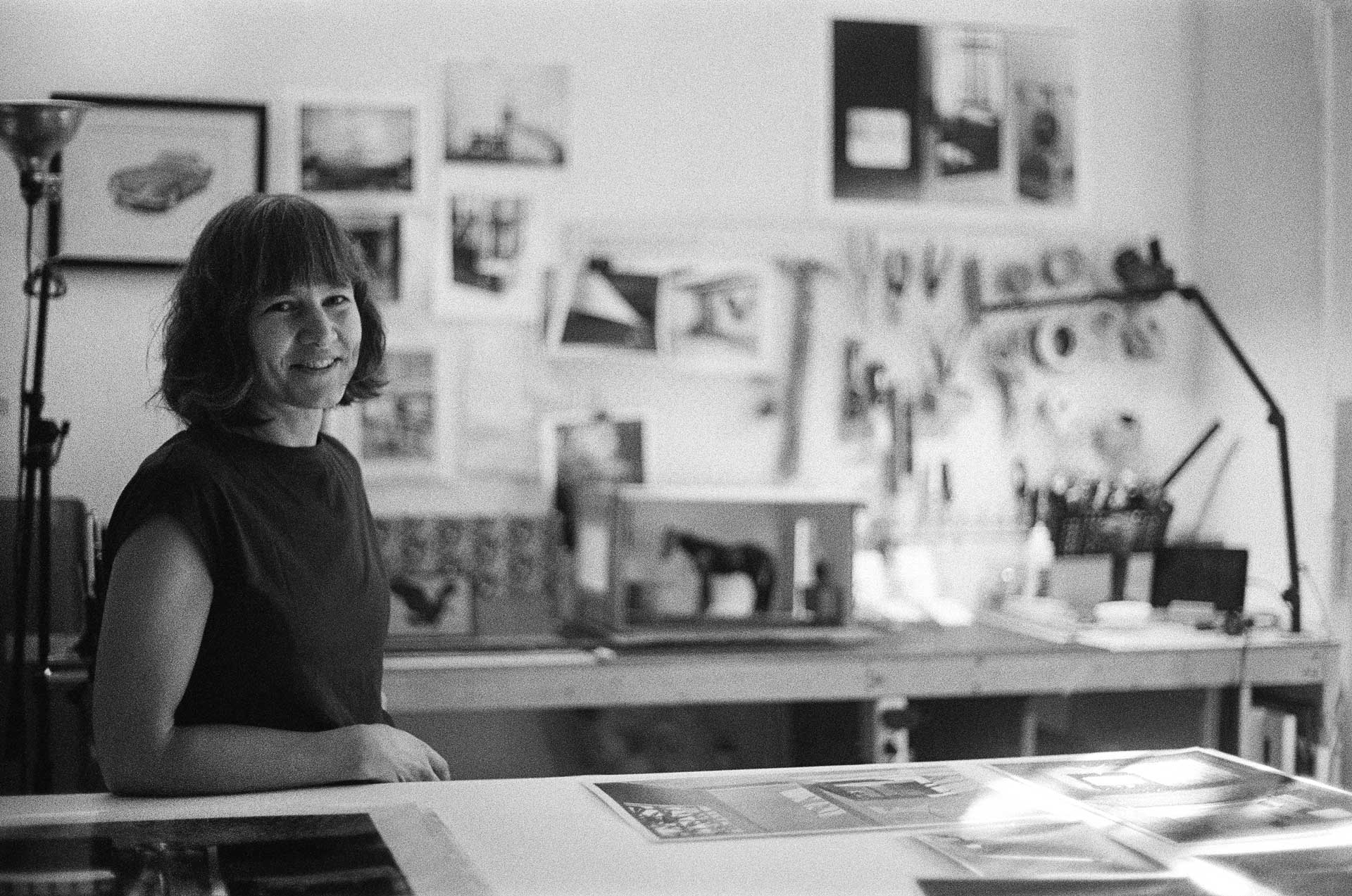
Studio routine, time you dedicated to search sketching……
I spend a good amount of time thinking, sketching and researching for new images. I feel I’m always being creative. Daily life is a big inspiration, and I’m constantly absorbing the world around me; keeping my eyes open to catch that strange ray of light, a precariously placed object . I’m seeking to highlight the magic and absurdity in everyday objects and spaces.
I carry a sketchbook with me everywhere, and even keep it by my bed at night. Instead of counting sheep, I imagine artworks. Even dreaming can be a creative time, sometimes my best ideas come to me when I’m asleep. I sketch a lot, and although my drawings are not particularly good or accurate they help me retain an idea.
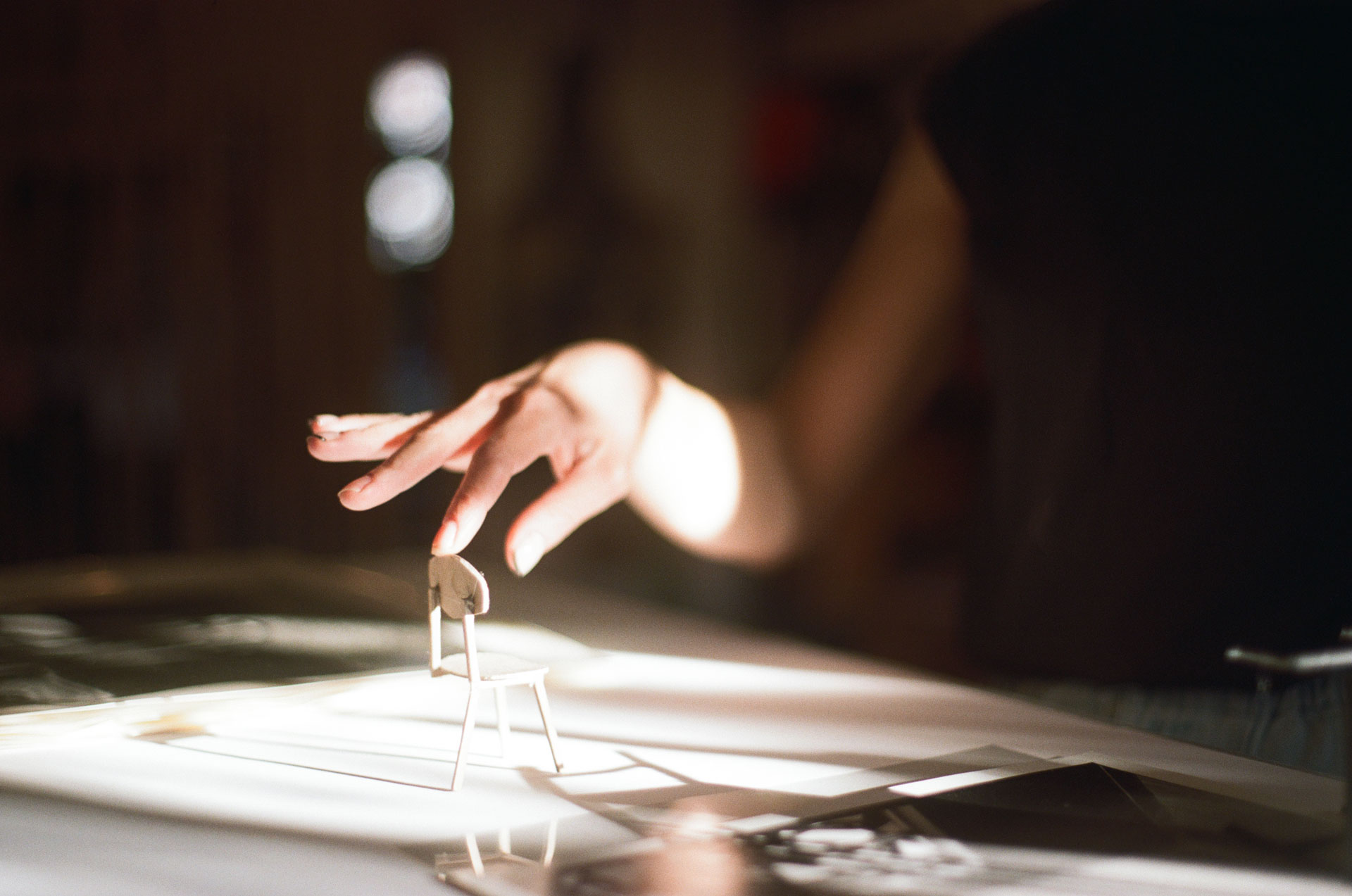
My fabrication process can be very time consuming, so I filter through lots of ideas and sketches before landing on one to produce. I like the idea to marinate for a while before I start constructing it. Recently I’ve been trying to make space for more studio “play time”. This is a time for me to challenge myself to move off the path I planned, and play around with different lighting, camera angles, and set ups. This is like sketching, but with a fabricated scene. All too often I don’t allow myself to stray from my original idea, and this can be detrimental to an image.
Allowing myself the freedom and encouragement to go off my prescribed rails, is where the true creativity begins.
I work a full time job, so my studio time is divided. I’m lucky to have a home studio, so that it’s easy to get to when I have the time. I try to use every spare minute I have.
I wake up around 7:00 am, make coffee and work in my studio for an hour or so before going to work. When I come home I put another hour in before making dinner, and then I try to get another hour in after dinner. I’m fortunate my process allows me to easily continue constructing wherever I left off.

When it’s time to photograph I need a full day. Photographing is the most tedious part of the process for me. Lighting and staging have to be precise. I’m shooting with a medium format film camera, so every shot is precious, and I must take my time to make sure it’s perfect before shooting. I do take test images with my phone camera but the lens is so different I can’t use it to
accurately frame my images. I prefer to shoot with film because the texture and depth within the image is so much more tangible than digital. The mindful setup required of the analogue camera, mirrors the careful construction of the objects to be pictured.
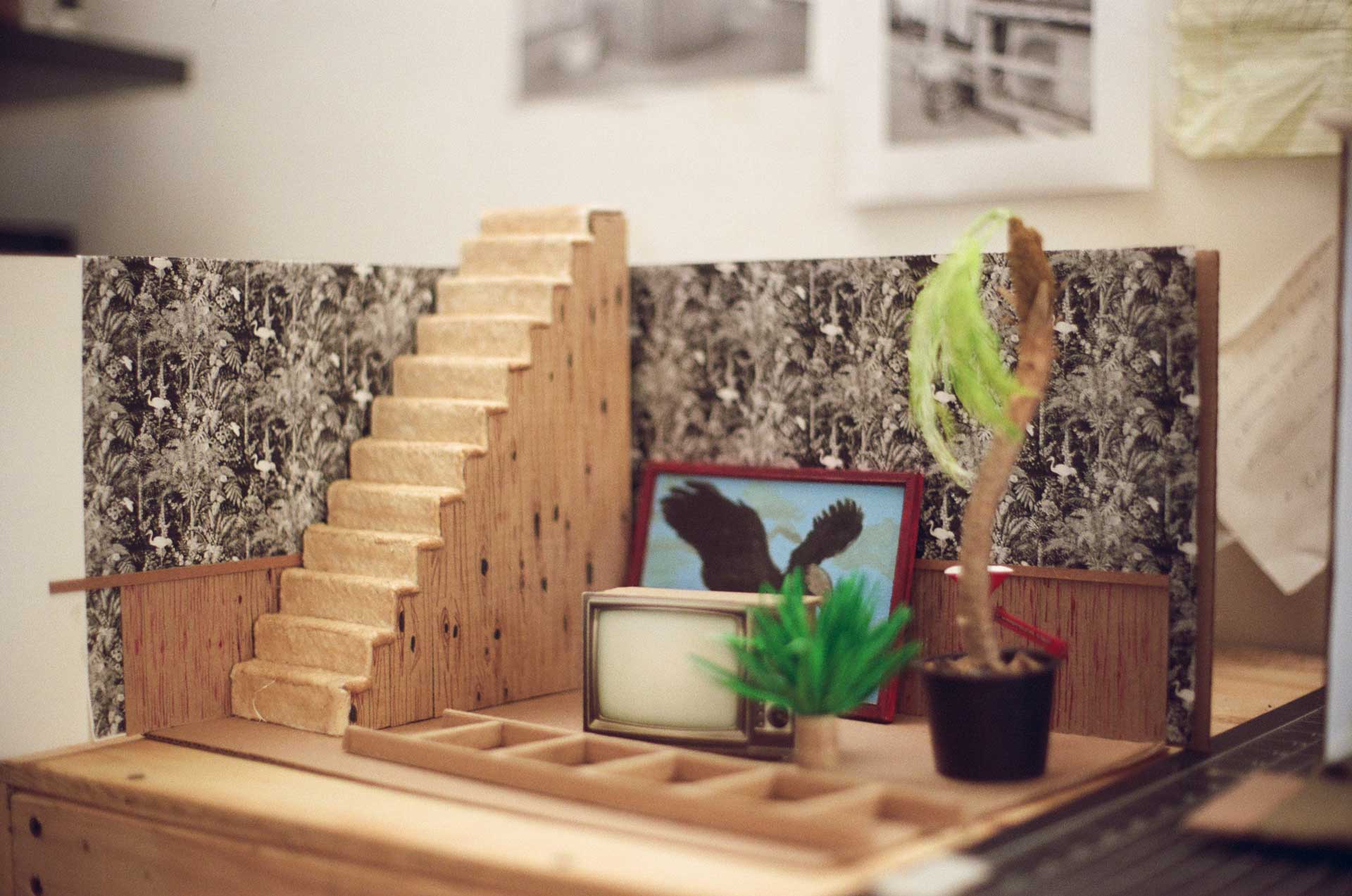
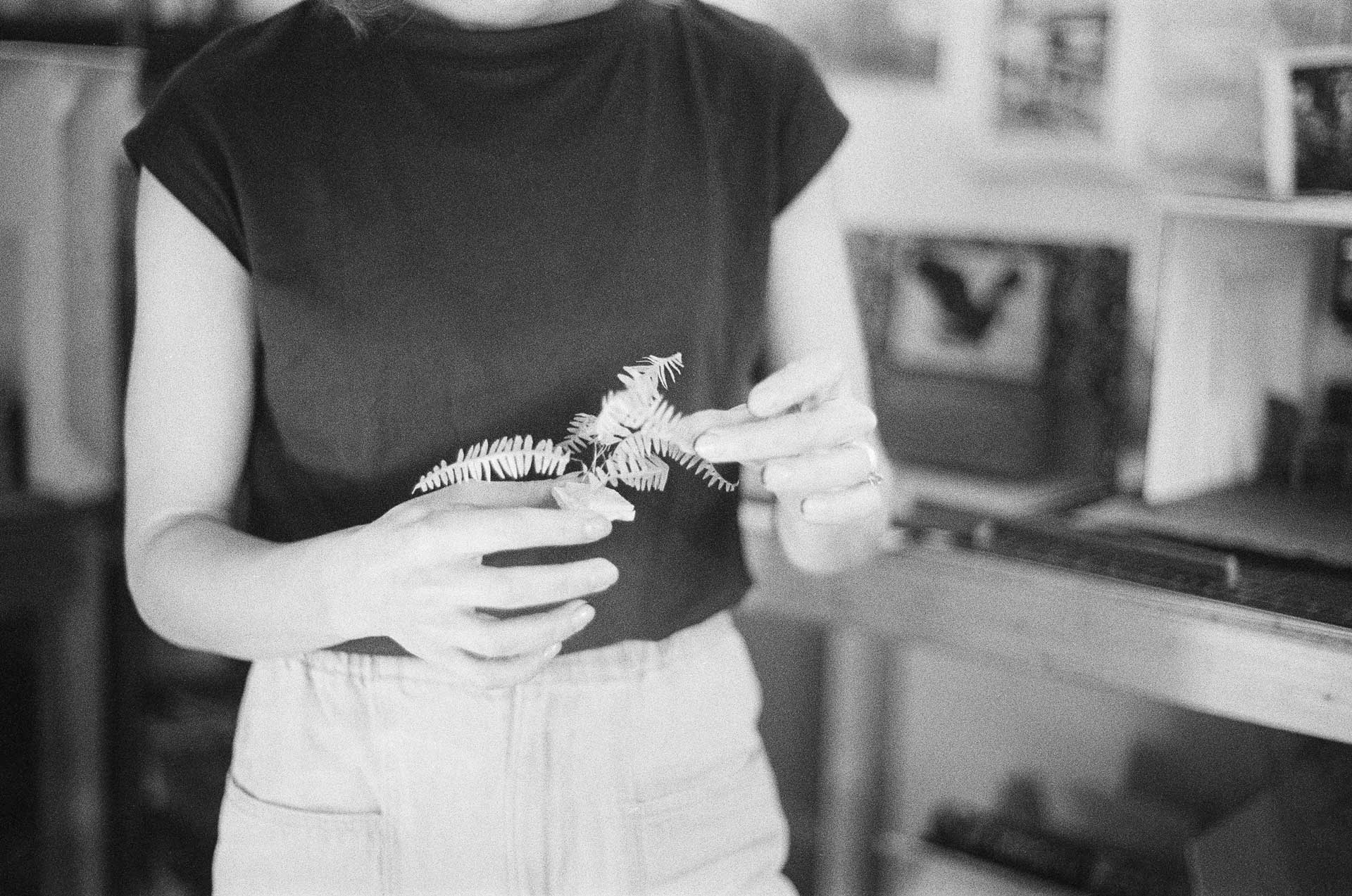
The pursuit of the uncanny drives me to accentuate the absurdities inherent to representation. By building and photographing models, this further creates the disorientation of space, time and scale, to create a particular kind of illusion. Not the big flashy kind, where an elephant disappears right before your eyes, but the subtlety of the card-counter, the sleight of hand, and unnoticeable graceful dance of the pickpocket. I am not a wizard, there is no real magic here. The best tricks are the ones we don’t even see.
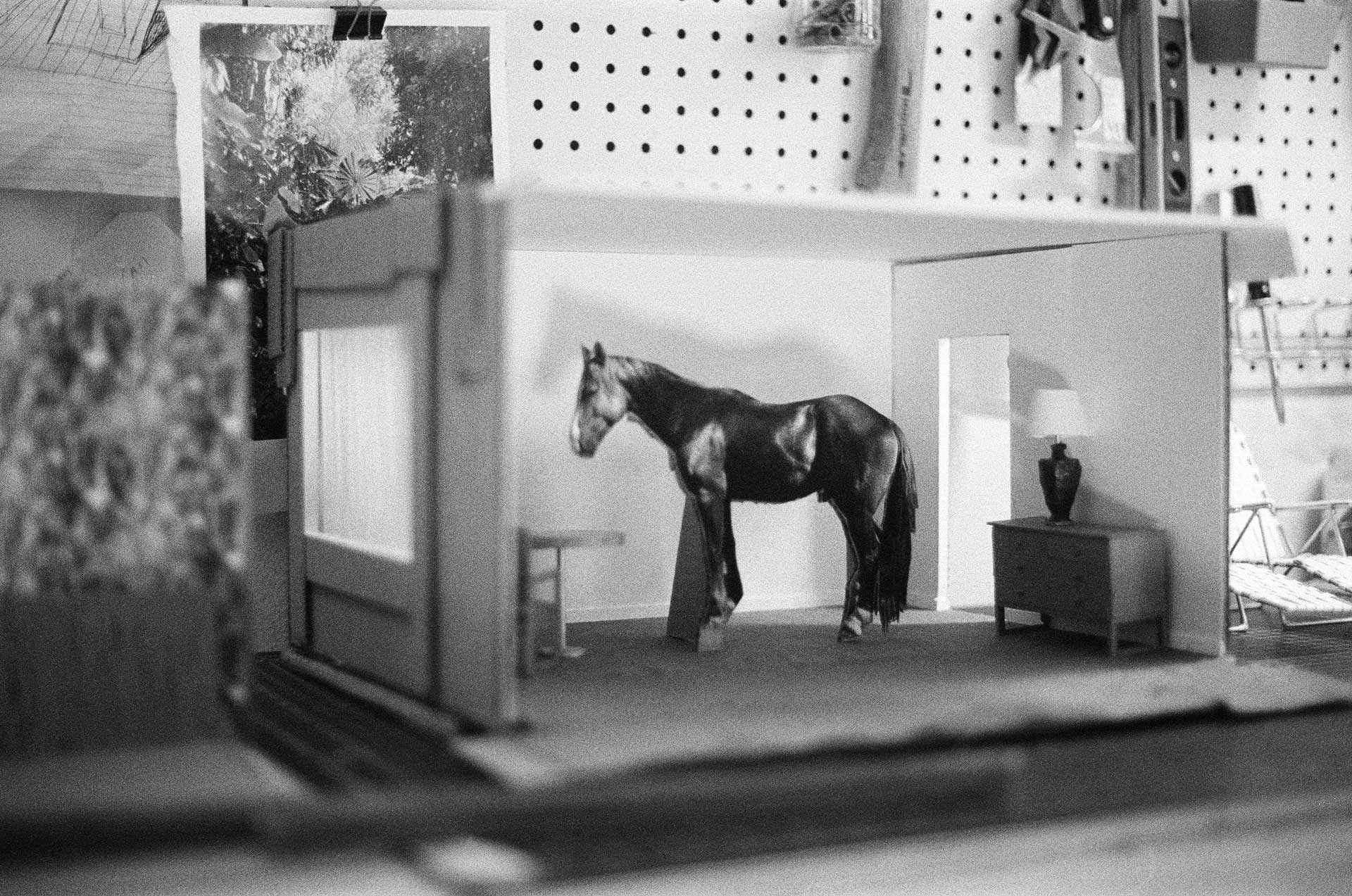
In the end, what I am trying to set the audience to experience is the photograph changes in perspective from visualizing the subject as an actual photographed place as opposed to seeing what is really its scale-model counterpart. As a result the viewer can question the preexisting notions of reality, memory, and place. Complex abstractions result in the intersection and overlap of those perceptions. The photograph is the ideal pedestal for these concepts, for its singular capacity for both depiction and deception. If you can’t trust your own eyes, then you can’t trust your own definition of place. And where are you supposed to exist at the plane of the image if all that grounds you, is slowly dissolving away?
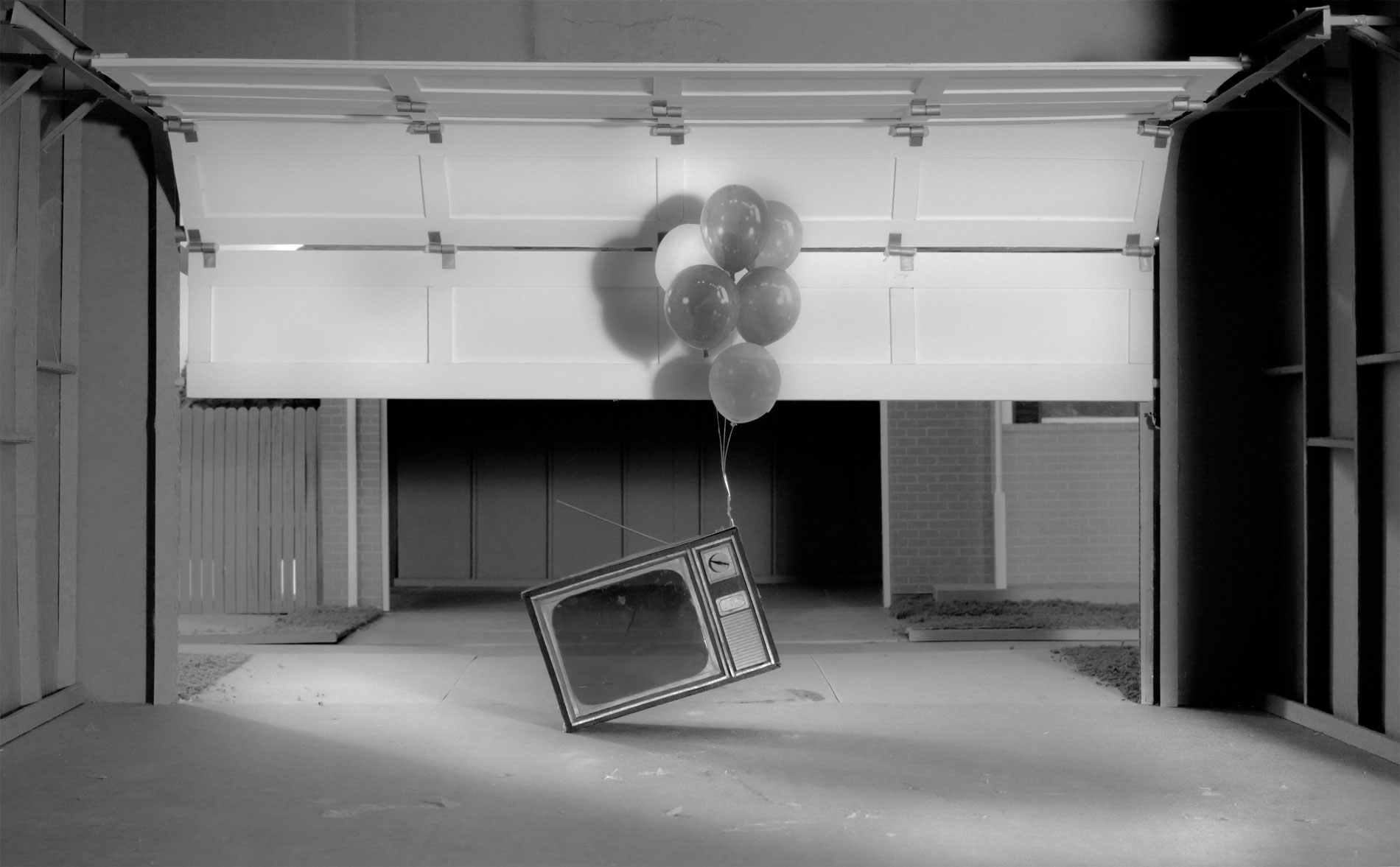
Robin Crookall, In the Garage, with Balloons, 2023.

Robin Crookall, Horse Party, 2024.

Robin Crookall, Lampshade, 2020.
You can find out more about Robin at http://www.robincrookall.com/ @robincrookall
Photos: Anita Goes


